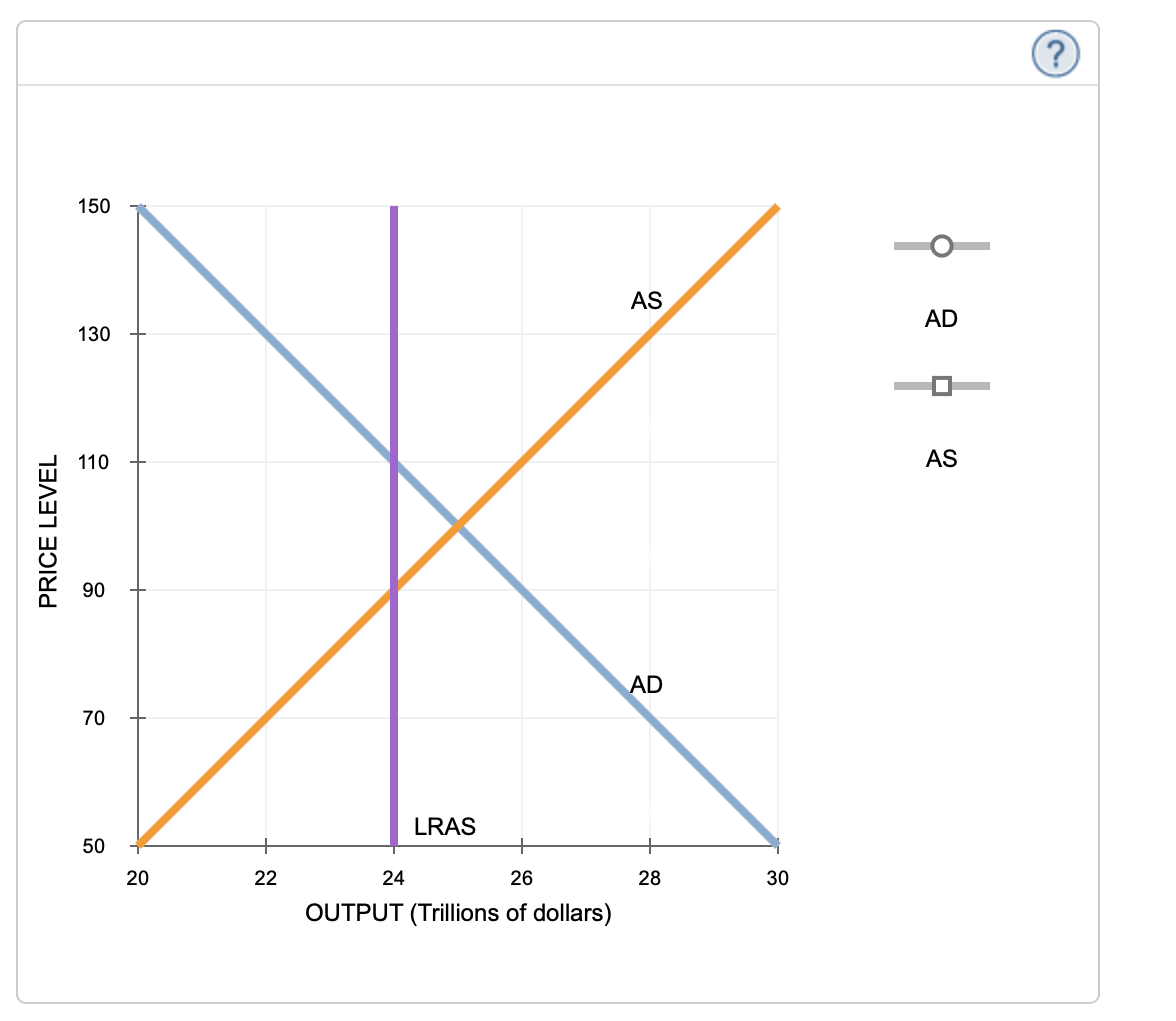Should the government use monetary and fiscal policy in an effort to stabilize the economy? The following questions address the issue of how monetary and fiscal policies affect the economy, as well as the pros and cons of using these tools to combat economic fluctuations. The following graph plots hypothetical aggregate demand (AD), short-run aggregate supply (AS), and long-run aggregate supply (LRAS) curves for the U.S. economy in January 2026. Suppose the government chooses to intervene in order to return the economy to the natural level of output by using (a contractionary/an expantionary) policy. Depending on which curve is affected by the government policy, shift either the AS curve or the AD curve to reflect the change that would successfully restore the natural level of output. Suppose that in January 2026 the government successfully carries out the type of policy necessary to restore the natural level of output described in the previous question. In March 2026, U.S. imports increase because the United States has eliminated trade restrictions on Mexican goods. Due to the (lags/consumer preferences/inflation) associated with implementing monetary and fiscal policy, the impact of the government's new policy will likely (leave the US economy unchanged/push the economy below the natural
Should the government use monetary and fiscal policy in an effort to stabilize the economy? The following questions address the issue of how monetary and fiscal policies affect the economy, as well as the pros and cons of using these tools to combat economic fluctuations.
The following graph plots hypothetical aggregate demand (AD), short-run
Suppose the government chooses to intervene in order to return the economy to the natural level of output by using (a contractionary/an expantionary) policy.
Depending on which curve is affected by the government policy, shift either the AS curve or the AD curve to reflect the change that would successfully restore the natural level of output.
Suppose that in January 2026 the government successfully carries out the type of policy necessary to restore the natural level of output described in the previous question. In March 2026, U.S. imports increase because the United States has eliminated trade restrictions on Mexican goods. Due to the (lags/consumer preferences/inflation) associated with implementing monetary and fiscal policy, the impact of the government's new policy will likely (leave the US economy unchanged/push the economy below the natural level of output/decrease the long run production capacity/leave the economy above the natural level of output) once the effects of the policy are fully realized.

Trending now
This is a popular solution!
Step by step
Solved in 2 steps with 1 images


